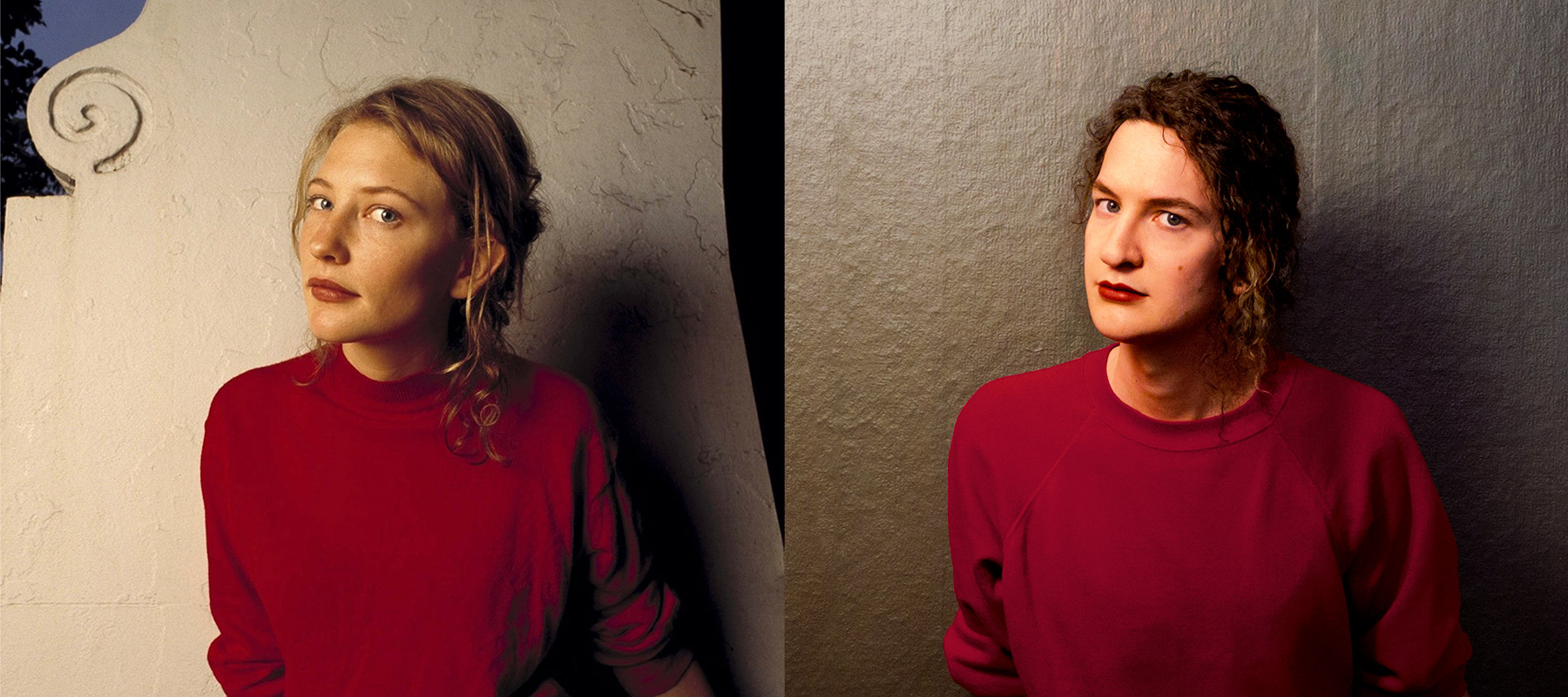The other day, I received a message that, at first glance, seemed like a great opportunity. From the quick preview that popped up on my phone, all I gathered was that a journalist wanted to feature me for something. That’s not too shocking; Oslo is a small town, and I’m a visible queer here. I work with the local Pride, I organise queer events (but only in non-plague times, of course), and I get around, socially. I think it’s safe for me to call myself a Known Quantity. Not famous, but known by people across town.
Not only that, I received the message a few days after some Instagram activity: one, a post for Trans Day of Visibility, promoting queer charities; and another, a much more personal effort to describe the feeling of not seeing a future with yourself in it. I also paired that with a photo shoot in which I replicated a portrait of Cate Blanchett, because, that’s the sort of antidote that one needs sometimes, okay?

Right: me, photographed by my wife in 2021.
Anyway, that was my media week that week: a loud TDoV post and a photo shoot where I compare myself to a beautiful woman. It made for a pretty obvious stream of information, I would think. A very readable bunch of posts, where my transness and my womanhood are emphasised. But reading, I’ve found, is not something all journalists are capable of.
The full message I received from that journalist was confusing, to say it kindly. I want to make a lovely story about how we express ourselves, and I’m currently looking for men who wear makeup. I saw your Instagram profile, and I’m wondering if I could have a chat with you?
Charming. Good opener. You have to be sloppy to look at my profile and not see the photos, and really bad at reading to not read that I’m a woman.1
Now, this is just a blip in my life. A low-effort attempt at getting some ❝human interest❞ subjects for your newspaper. But what a fucking effort, y’all. To see an Instagram profile and have the ability to see nothing but the ‘Message’ button. To not read – for want or for ability – the word ‘trans’ on the second-to-last photo in my profile. To not even read my bio. I’ve long known to treat journalists just like everyone else: generally as clueless as the rest of us. But the blatant inability to read a profile, especially when you’re looking for people who, in some way, have anything to do with (very superficial ideas of) gender expression, really does lower my esteem a little more. It was a low bar, and this journalist limboed right under it.
Queer readability is a whole thing. I know that. I live it. I’m visibly, legibly queer, and there are many more words to write about that. For example, every single stranger that I’ve met in the past year has misgendered me. Every single one. And that hurts every time. But I also know they’re all being colossal dipshits. It’s the twenties, baby! Get with it. If you meet someone and you don’t want to ask for pronouns, the best gamble is usually in their expression, not your assumption. If you struggle to read me, please, please refrain from trying to write your own version instead.
-
And further: sure, a little bit of lipstick technically counts as makeup, but nothing in my ~aesthetic~ is defined by makeup. I just look that good, okay? ←